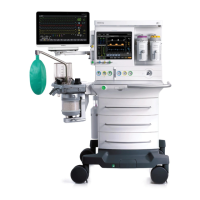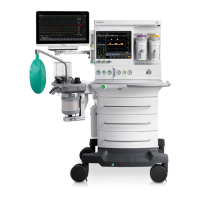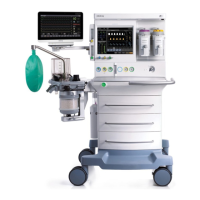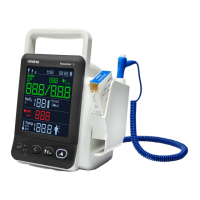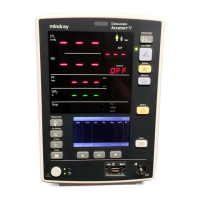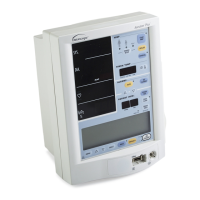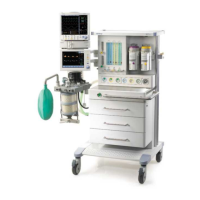Operator’s Manual of Anesthesia System C - 5
Operating Principles Pneumatic Diagram
The pneumatic system of the anesthesia system is composed of six parts: the anesthetic gas
delivery system, the anesthetic gas delivery equipment (mechanical vaporizer), the anesthetic
ventilator, the breathing system, the negative pressure suction system, and the Anesthetic Gas
Scavenging System (AGSS).
The pneumatic circuit of the anesthetic gas delivery system is used to generate the mixed agent
(fresh gas), with O2, N2O and Air as the input and the mixed agent (that is, fresh gas), the auxiliary
O2 supply gas, and the O2 flush gas among others as the output.
The anesthetic gas delivery equipment (mechanical vaporizer) supplies concentration-controlled
anesthetic gas vapor, for temperature compensation, flow compensation and pressure
compensation purposes. Isoflurane, Sevoflurane and Desflurane agents are supported.
The pneumatic circuit of the anesthetic ventilator serves to drive the respiration process of
patients.
The breathing system provides a closed loop for the anesthetic gas. The CO2 in the patient's
exhaled gas is absorbed in the inspiration phase, so that the exhaled gas can be recycled for
inhalation to ensure the temperature, humidity and other conditions of the gas. The breathing
system has two modes available: the manual ventilation and the automatic ventilation,
controlled by the manual/auto ventilation switch. Meanwhile, the system also outputs
corresponding electrical signals to update the Control Board on its own status.
The Anesthetic Gas Scavenging System (AGSS) is composed of the AGSS delivery system, the
AGSS absorption system and the AGSS disposal system, with the waste gas discharged from the
anesthesia system outlet as the input. Its output is channeled to the facility's disposal system
(AGSS disposal system).
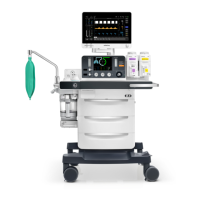
